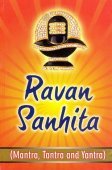Kalp: 4 definitions
Introduction:
Kalp means something in Hinduism, Sanskrit, Hindi, biology. If you want to know the exact meaning, history, etymology or English translation of this term then check out the descriptions on this page. Add your comment or reference to a book if you want to contribute to this summary article.
Biology (plants and animals)
Source: Google Books: CRC World Dictionary (Regional names)Kalp in India is the name of a plant defined with Adansonia digitata in various botanical sources. This page contains potential references in Ayurveda, modern medicine, and other folk traditions or local practices It has the synonym Ophelus sitularius Lour. (among others).
Example references for further research on medicinal uses or toxicity (see latin names for full list):
· A concise dictionary of the Bini language of Southern Nigeria. (1937)
· Flora Cochinchinensis (1790)
· Sylva Telluriana (1838)
· The Okavango River. (1861)
· Compt. Rend. Congres Inter. Bot. (1900)
· Revisio Generum Plantarum (1891)
If you are looking for specific details regarding Kalp, for example extract dosage, pregnancy safety, diet and recipes, chemical composition, health benefits, side effects, have a look at these references.

This sections includes definitions from the five kingdoms of living things: Animals, Plants, Fungi, Protists and Monera. It will include both the official binomial nomenclature (scientific names usually in Latin) as well as regional spellings and variants.
Languages of India and abroad
Sanskrit dictionary
[Sanskrit to German]
Sanskrit, also spelled संस्कृतम् (saṃskṛtam), is an ancient language of India commonly seen as the grandmother of the Indo-European language family (even English!). Closely allied with Prakrit and Pali, Sanskrit is more exhaustive in both grammar and terms and has the most extensive collection of literature in the world, greatly surpassing its sister-languages Greek and Latin.
Hindi dictionary
Source: DDSA: A practical Hindi-English dictionaryKalp in Hindi refers in English to:—(nm) era; having the manner or form of, similar to, resembling, almost like ([rishikalpa] like a sage; [pitrikalpa] like father)..—kalp (कल्प) is alternatively transliterated as Kalpa.
...
See also (Relevant definitions)
Starts with (+269): Kal-pitippuvelai, Kalpa, Kalpa dev, Kalpaasi, Kalpabhashya, Kalpabhava, Kalpabheda, Kalpabhuja, Kalpabhuruha, Kalpabhushana, Kalpabrahmana, Kalpabriksha, Kalpacintamani, Kalpadatta, Kalpade, Kalpadev, Kalpadhenu, Kalpadhikarin, Kalpadi, Kalpadipika.
Ends with: Abhikalp, Anukalp, Avikalp, Himkalp, Kayakalp, Navakalp, Nirvikalp, Sankalp, Savikalp, Vikalp.
Full-text (+23): Klipta, Upaklapta, Kalpa, Samklipti, Talpaka, Prathamakalpita, Pratikalpya, Samkalpaniya, Upakalpayitavya, Avakalpita, Kalpin, Pratikalpa, Samkalpitavya, Parikalpya, Kshuraklipta, Parikappa, Avaklapti, Samkalpana, Samkalpaka, Prakalpana.
Relevant text
Search found 5 books and stories containing Kalp; (plurals include: Kalps). You can also click to the full overview containing English textual excerpts. Below are direct links for the most relevant articles:
Nrisinha Stotra < [The Divine Strotras]
Jain Remains of Ancient Bengal (by Shubha Majumder)
Life History of Tīrthaṅkara Mahāvīra < [Chapter 3 - Historical Background of Jainism in Ancient Bengal]
Song 11 < [Grantharambha (the book begins)]
Lakulisha-Pashupata (Philosophy and Practice) (by Geetika Kaw Kher)
Evidence of Ajivika cult in Kashmir < [Chapter 2 - Spread and Transition]
Related products


